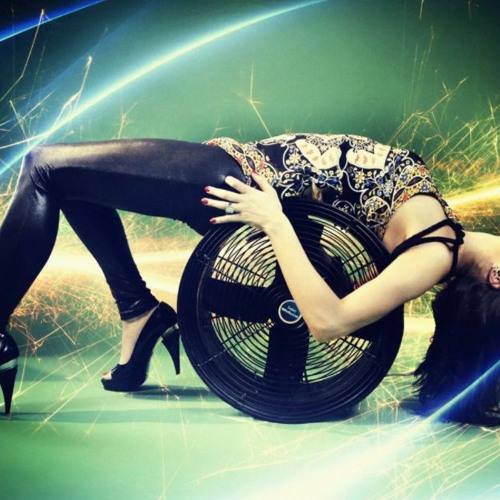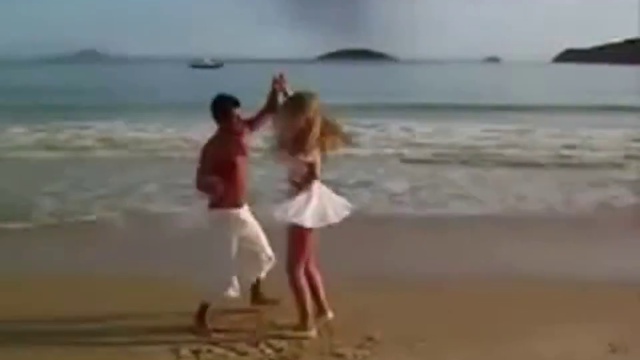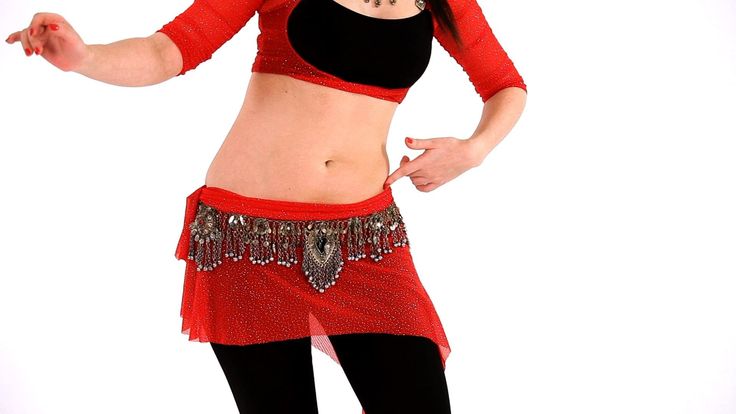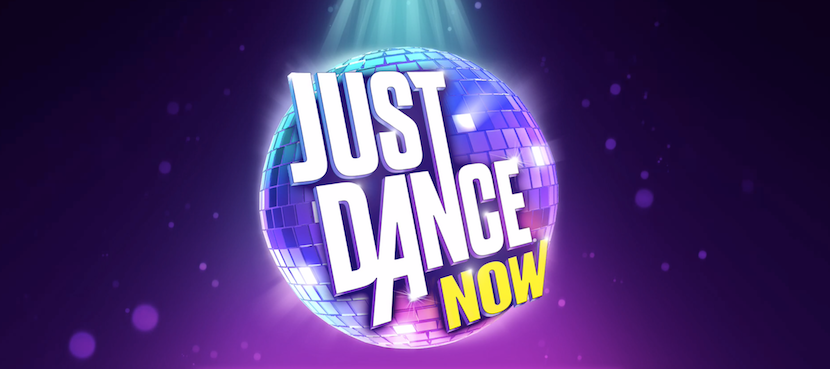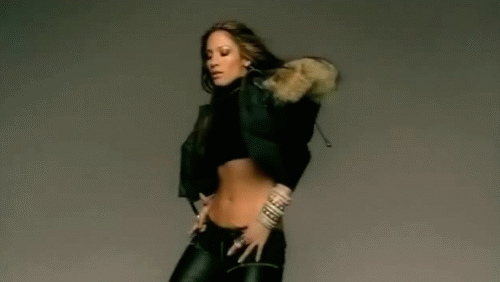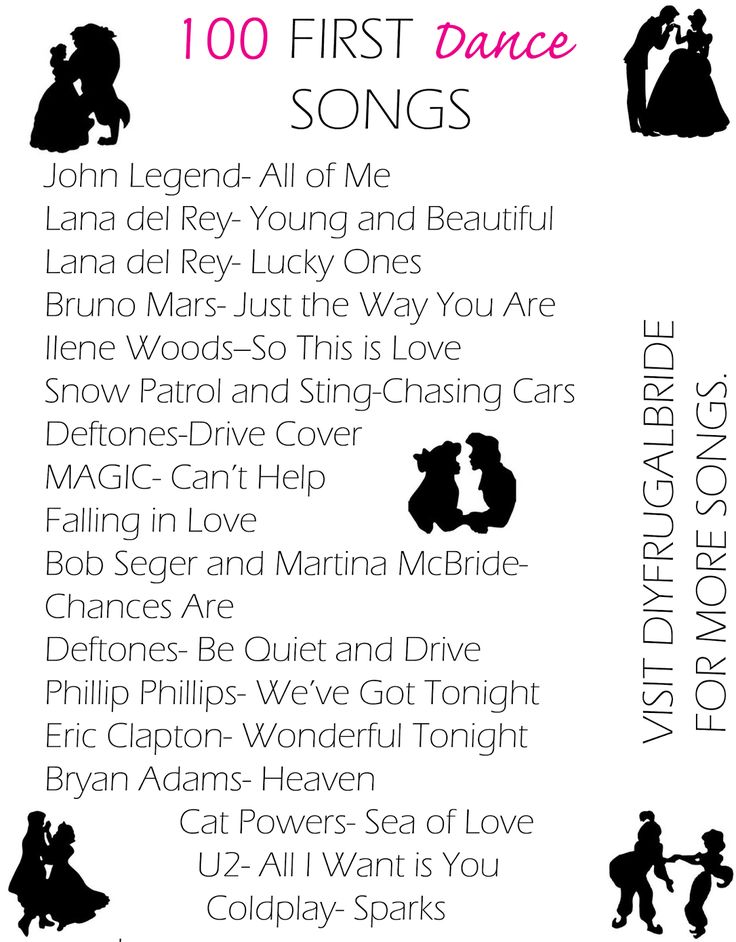How to become a good dancer at parties
How to Dance at a Club or Party
You probably know people who can dance at a club without a second thought.
They just go out, have a few drinks, get down on the dance floor, and have a great night.
Meanwhile, you're seized by panic and insecurity just thinking about dancing at a club.
And whenever you do drag yourself out, you stay glued to the wall and watch everyone else let loose on the dance floor.
But guess what? Those awkward feels are completely normal. And we PROMISE you can overcome them!
Follow these 5 simple steps and never worry about feeling left out again.
1. Find the beat/rhythm as you make your way towards the dance floor
Don't expect yourself to bust out a Step Up routine out of nowhere as soon as you step foot on the dance floor.
This isn't a movie! Start small – really small – by just bobbing your head to the beat.
Do this before you even get on the dance floor. Think of it this way: Music is the one thing that lubricates the whole experience of being at the club.
It sets the mood as soon as you walk in until the moment you walk out. You have to be comfortable with the music first.
So start interacting with the music right away. You can listen and nod your head a you're holding your drink, hanging with a friend, or even sitting down.
This is an easy way to set yourself up for success on the dance floor before you even start dancing.
Your body will already have a handle on the rhythm, so you're more likely to stay on beat by the time you do get your feet steppin'.
Watch this video to learn how to find and count beats in music:
2. Start with a small bounce / groove
Once you're on, or around, the dance floor, start bouncing with your whole body.
Think of this bounce as a bigger version of your head bob. You're still moving to that same rhythm, but now with your knees, core, and chest.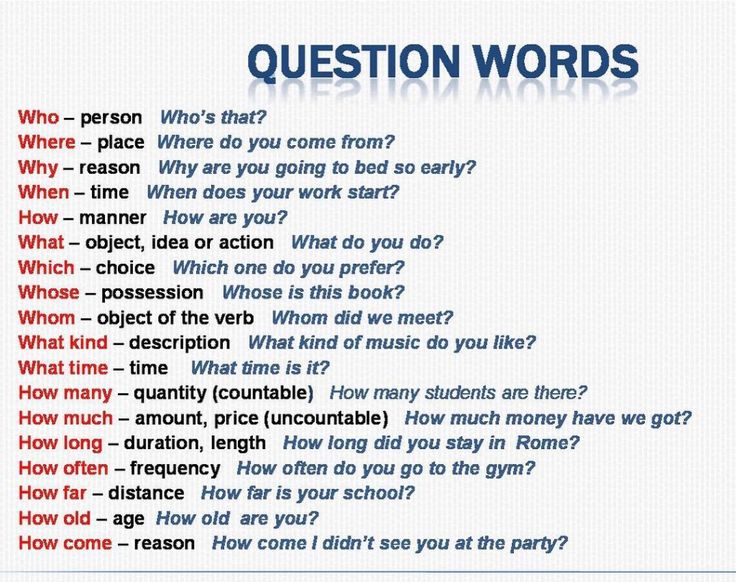
You know how a baby bounces on his knees when he hears a song he likes? Like that, but not as jolt-y.
Ease into those bounces calmly, then slowly build up your energy. This helps make your dancing look more natural.
Carlo Darang describes what a bounce / groove is in this video:
3. Learn simple steps
Got a handle on the music? Great.
Started bouncing with your body? Check. Now, let's get your feet moving!
But wait – you won't know which foot to step where without any practice.
So learn a few basic dance steps before you go to dance at a club.
This video will teach you how to do 3 basic dance moves that work with any song:
Wanna learn more basic party moves like these?
Check out Bianca's "Intro to Dance" program on STEEZY Studio! It'll teach you everything you need to know to get down on the dance floor.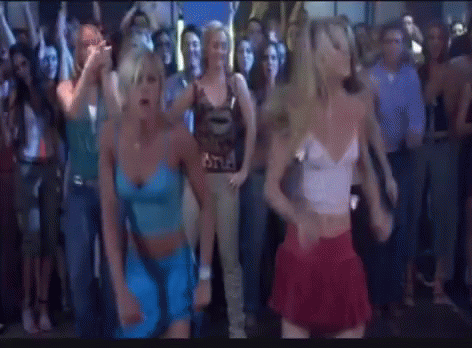
Click here to take the first 4 classes for free.
4. Let loose
Now that you've got the basics of dance down, it's time to put on a few finishing touches to make sure you look comfortable and confident with every move.
These quick tips will help you refine your dancing so you look more loose, groovy, and comfortable:
5. Join the party
By this point, you've got a handle on dancing 1. on beat 2. with your whole body 3. using steps.
But you didn't come to dance at a club to do all this alone!
Once you have that base, dance with the people around you.
If you're in a crowd or a group of friends, then you can play off of their movements and energy.
Mimic the moves your friends are doing, lip sync with them, rap Nicki's entire verse in Motor Sport from memory.
And if the DJ or song lyrics tell you to do something (like put your hands up or jump), then do it!
These are little things you can't predict or practice – remember that you're out to have fun, not to play DDR in your head.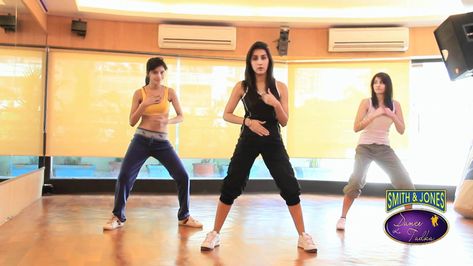
Grinding (or whatever you call it) on someone is its own topic – but whether you're dancing with one person or a whole group of people, the most important thing to do is to... Stay in rhythm!
You and your partner or friends could be doing totally different things. They could be jumping while you're pumping your arms.
She could be swaying side to side as you're 2-stepping.
But as long as you're moving to the same beat, it'll still feel like you're dancing together.
(The closer you physically get, though, the more similar you want your movements to be so that you don't end up hitting each other or creating friction between your moves. Dance with them!)
---
I hope these tips help you kiss those insecurities goodbye!
Follow these 5 steps and you'll realize that it's possible, and actually quite easy, to dance at a club.
You just need the right resources, some practice, and a dash of confidence. ;)
Have fun!
How to Dance At A Basic "Good Enough" Level
- Chris MacLeod, MSW
It's hard to avoid dancing entirely in social situations, especially when you're younger. Arguably, everyone should at least become passable at it. It's not as hard to pick up the basics as you may think, and it's smoother sailing once you can join some friends who want to dance and hold your own.
Arguably, everyone should at least become passable at it. It's not as hard to pick up the basics as you may think, and it's smoother sailing once you can join some friends who want to dance and hold your own.
You don't have to reach a particularly high standard
You just need to be good enough that you can get on the dance floor, blend in with everyone else, not look like an idiot, and not feel overly uncomfortable while you're there. (Lots of people are at least somewhat awkward about dancing. That's why they have to down a few drinks and wait for the dance floor to get busy before they step out on it.)
You don't have to look like someone out of a music video. You've just got to be decent enough to get by. Being better than the minimum never hurts of course, but just knowing the basics will put you way ahead of all the non-dancers out there.
If you're straight, try not to worry too much about what the opposite sex thinks. They don't have ultra-picky standards
Straight people don't purely dance to impress the opposite sex, but it is often something they think about.
For guys
Generalization time. Women and men have different ideas of what a good dancer is. Guys often see dancing as a skill to show off. Being better than other dudes on the dance floor is important to them. Their typical image of a "good dancer" is a gymnastic break dancer doing a bunch of flips, or a guy doing a fancy, fluid Popping & Locking routine. A woman's concept of a good dancer is a closer to a passably moving guy who looks comfortable, confident, and like he's having fun.
When a woman wants to dance with you, all she really wants is that...
- You are there with her
- You are dancing with her
- You are not dancing horribly
- You are not being too forward and creepy
For women
This totally sounds like a simplistic stereotype, but most of the time when you're dancing with a guy he's not making a detailed critique of your style. He's probably just thinking, "Yay! I'm dancing with a woman!" Or if he's watching you dance from farther away, he's likely thinking, "She seems like someone I might want to talk to. I wonder if she'd shoot me down though..." Even if he seems like the most genuinely suave, confident guy ever, he's probably still thinking like that on some level. He's probably fifty times more worried about how his dancing looks to you than the other way around. Even he's an amazing dancer and you're not, he likely isn't holding it against you.
I wonder if she'd shoot me down though..." Even if he seems like the most genuinely suave, confident guy ever, he's probably still thinking like that on some level. He's probably fifty times more worried about how his dancing looks to you than the other way around. Even he's an amazing dancer and you're not, he likely isn't holding it against you.
(That was from my observations as a straight guy. I'm not gay so I won't try to write from their perspective, but I can't imagine their standards for dance partners are radically different.)
Try not to worry too much about what strangers think
Easier said than done, but don't use up too much mental energy fretting about how random bystanders are judging you. Occasionally people will snicker and point to people who are dancing because they're really just too nervous to do it themselves. Random dudes sucking on their beer aren't your audience. Also, like the point above mentioned, your average dancer is more preoccupied with how they look than anything.
If there's one thing to keep in mind it's to be toned-down and low key
Don't be a spaz and try to pull off some fancy moves unless you 100% know you'll look good doing them. It's better to reel yourself in. Over reaching and flailing around is worse than blending in and being a bit boring and unoriginal. Don't feel you have to pull off tons of new moves every second and put on a show for everyone either. It's okay to dance in a simple, repetitive way and just enjoy your friends' company.
Acquire a basic, reliable dancing 'core'
You know when you're watching a movie or TV show and there's a scene set in a dance club, how the extras in the background will often to be dancing in a kind of simple, nondescript way? That's the 'core' I'm talking about. If you know how to do that, then in a lot of situations that's actually all you need. However, if you want, you can later choose to build off your base and make your style more fancy.
To get that core stand in front of a mirror with some not-too-fast music on, or just read along and imagine you're doing the following:
- To dance you've got to move your body in time to the beat of the music.
 The most basic newbie mistake you can make is to move out of sync with the beat. Don't know the beat I'm referring to? Put on a song and listen for the underlying, repeating thump-thump-thump pattern. Every style of music has a different speed. It doesn't take much practice to learn how to hear it.
The most basic newbie mistake you can make is to move out of sync with the beat. Don't know the beat I'm referring to? Put on a song and listen for the underlying, repeating thump-thump-thump pattern. Every style of music has a different speed. It doesn't take much practice to learn how to hear it. - Okay, you're just standing there in front of the mirror with some song playing. Now try moving your arms back and forth to the beat slightly, while keeping your legs ramrod straight. You'll notice that looks totally off. So the next most basic thing you've got to do is bounce up and down on your knees. So keep everything else still, and just move your knees up and down to the music.
- That still looks weird, since you're just going up and down like a piston. So rotate your torso a bit in time with your knee movements, a little like you're skiing. Keep your torso fairly loose and relaxed.
- That's looking better, but your arms are still stiffly hanging at your side.
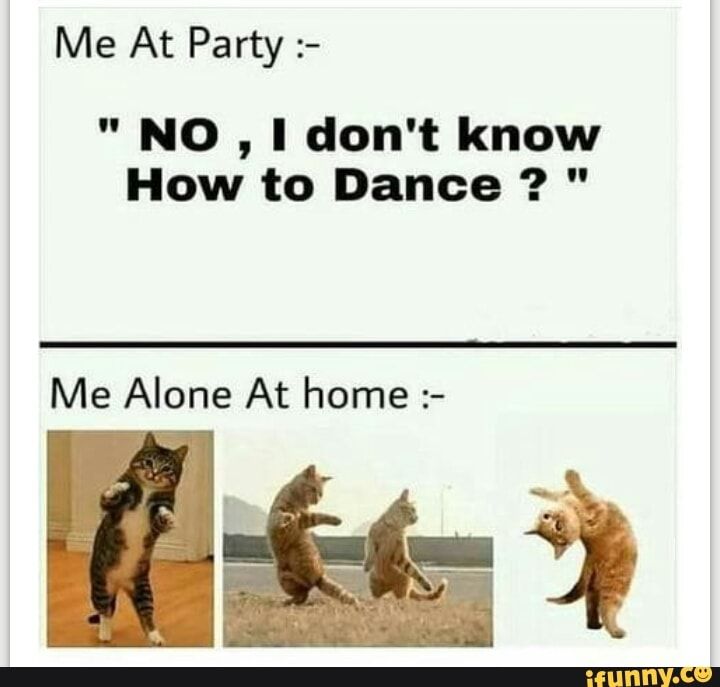 So try relaxing them a bit and let them swing up and down with your knee bends and torso rotations.
So try relaxing them a bit and let them swing up and down with your knee bends and torso rotations.
Once you're standing in one spot, bouncing on your knees, turning your torso a bit, and moving your arms somewhat, that's about the absolute bare minimum you can do to be considered dancing. Like I said, sometimes that's all you need. If you didn't know how to dance at all, and stopped right here, that's a lot better than nothing.
However, while still staying in the realm of dancing in a super generic 'core' way, you can do little things to spice up the bare minimum:
- Don't just limply swing your arms, get your shoulders into it.
- Take steps side to side, or back and forth.
- Mix up your arm movements.
- Nod your head.
- Do little pivots or twists on one foot, or both feet.
- Don't just slightly rotate your torso, move it back and forth, or from one side to the other.
- Pick up one foot ever so slightly, then the other, to kind of march in place.
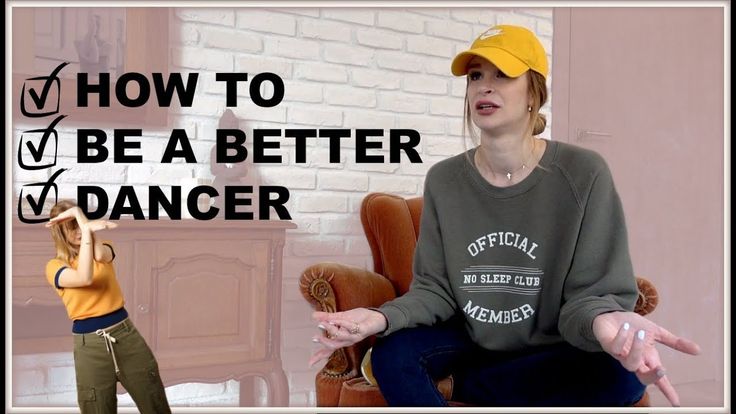 Don't overdo the movement and look like a robot, just move your feet a tad.
Don't overdo the movement and look like a robot, just move your feet a tad. - Mix up the possible arm, torso, and leg variations. Find a combination that looks good and do it for a while, then switch to another one. Don't change things up to the point where you're doing something new every half a second. That looks too scattered.
At this point you're hardly going to win a dance competition, but you're at the level of those movie extras, and 75% of the people you'll see out at a bar. At this point you really could develop no further in your dancing ability and be able to get by on a dance floor for the rest of your life.
The thing with this basic core is that it's pretty adaptable to the standard kinds of music you'll come across. If you're dancing to Hip Hop, just make all your movements a little more Hip Hop-ish. If you're dancing to retro 80's Pop, just make all your moves a little more cheesy and energetic.
Add some more fancy moves and sequences onto your core if you want to
If you dance in a basic way you'll get by, but you won't stand out a ton.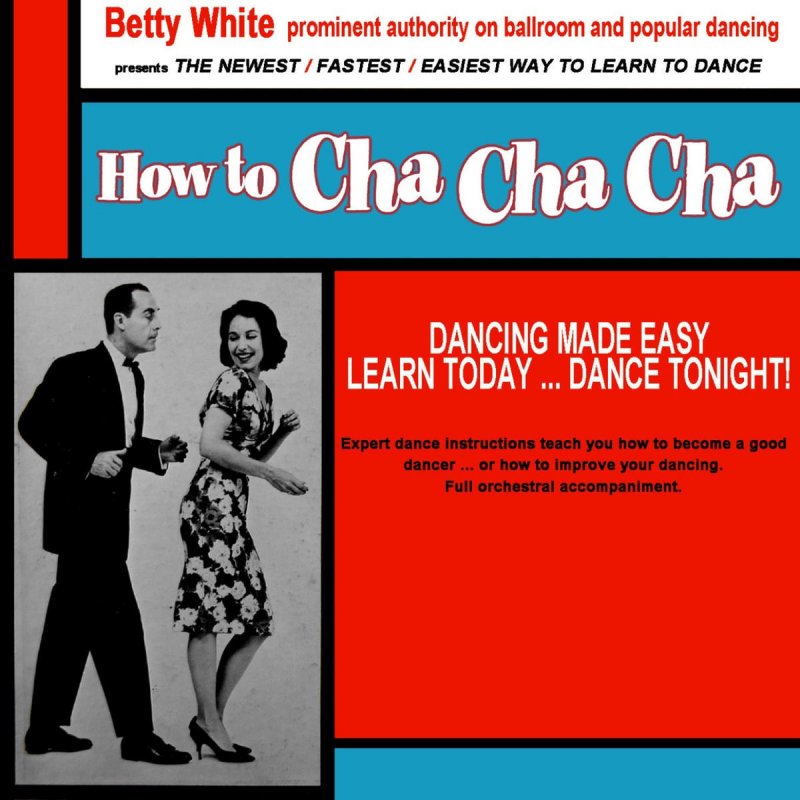 If you want to look a little slicker you can start adding in some canned movements, or sequences of moves. There's more of a Risk/Reward thing going on at this stage. You've got to work at it more as well. Dancing generically is safer and easier. If you try to pull off some awesome routine and bungle the execution you'll look clueless or goofy. You need to practice to make sure you look good. Some places to learn new moves are:
If you want to look a little slicker you can start adding in some canned movements, or sequences of moves. There's more of a Risk/Reward thing going on at this stage. You've got to work at it more as well. Dancing generically is safer and easier. If you try to pull off some awesome routine and bungle the execution you'll look clueless or goofy. You need to practice to make sure you look good. Some places to learn new moves are:
- By watching strangers dancing at a club and stealing ideas from them.
- By watching your friends dance.
- By watching movies or music videos.
- Through online video tutorials.
- Through dancing-oriented video games.
- By experimenting and trying to come up with some moves of your own.
- By taking an actual class.
The best way to learn is to just practice
If you get into the habit of dancing around at home in the spare moments you're listening to music it won't be long before you start to get the hang of things. After that the more time you put in, the more you'll refine your style.
After that the more time you put in, the more you'll refine your style.
Get in front of a mirror, put some good music on, and start dancing to it in the basic way I mentioned above. Remember, if your instinct is to jump around a lot or be a bit spazzy, consciously tone yourself down. Try to get comfortable with the typical, boring way of dancing first. A lot of the time on actual dance floors you won't have that much room anyway, so if you only practice moves that requires a lot of space you'll be put in an awkward spot when you end up somewhere more packed.
One way to deliberately practice is to try working on one aspect of dancing at a time, then putting the pieces together. This may not look good in the moment, but it'll let you concentrate on and isolate certain aspects of how you move. So you might keep everything else fairly still, and only try out different arm movements, or ways of moving your torso. Or you could try different ways of stepping back and forth, or moving only one leg at a time.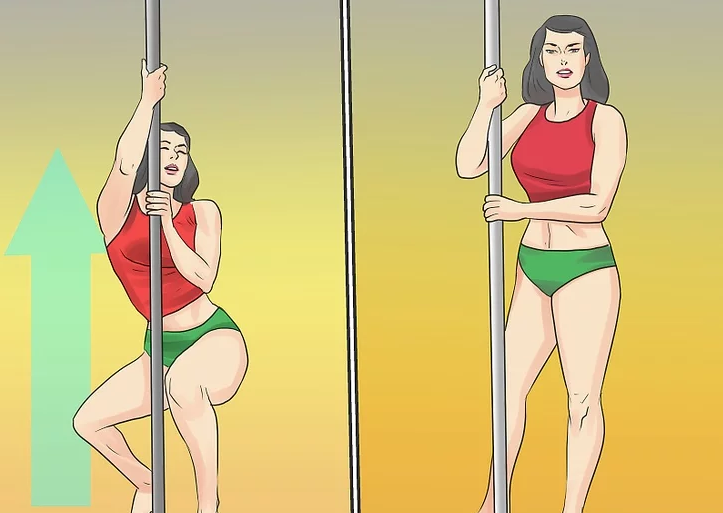
Article continues below...
Practice different dancing scenarios
Aside from figuring out how to move your body, there are different situations you'll find yourself dancing under:
Dancing on a dance floor where you have a lot of room
This is the easiest as you have all the space you need, and you can do somewhat more showy stuff if you feel like it. Sometimes the ocean of space can feel like too much to work with or make you feel exposed and self-conscious though.
Dancing on a crowded dance floor
Here your movements are really restricted. When you're practicing make sure to keep your feet rooted to the ground and don't swing your arms out too much. Try to make your movements look good anyway.
Dancing close and face to face with someone else
The issue here is knocking knees and not being able to extend your arms too far in front of you. Try dancing really close to a wall to get an idea of what it's like.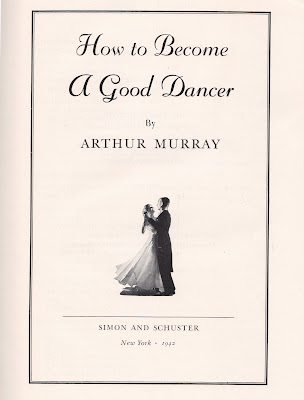 Or you can try dancing really close to a full length mirror. It's totally goofy looking, but it's still a good way to get used to the feeling of being near someone.
Or you can try dancing really close to a full length mirror. It's totally goofy looking, but it's still a good way to get used to the feeling of being near someone.
Dancing with a partner
Here I'm referring to partner dancing in an informal, improvised way, not doing a specific dance like the Tango. Of course this is something that you can't practice on your own super effectively. Still, you could put your hands out in front of you like you're holding someone's waist or shoulders and practice moving within that restriction. I don't blame you if you don't want to do this. It's definitely a bit silly. Still, if the idea of dancing with someone makes you uncomfortable, practicing like this can take the edge off.
More practical advice would be to take a salsa, swing, or ballroom dancing class, asking your friends to teach you to dance, or practicing with your partner, if you're seeing someone. If it doesn't make you anxious, you could even try going to a club and trying to dance with someone you meet there.
Non-verbal communication is important as well
Body language plays a role in dancing too. It would look strange if someone was dancing to a 70's funk song with the mannerisms and facial expressions of someone listening to 90's Gangsta Rap. You don't want to be too exaggerated or hammy with your body language, but it is something to subtly bring into the equation. The other basic thing about body language is that sometimes the difference between someone who looks good and so-so on the dance floor is their non-verbals. If someone looks uncomfortable and bored, they may come across as dancing poorly. The same movements with some energy and confidence can look fine.
Dancing is a physical activity
Simple tip here. The better shape you're in, the easier dancing will be. You'll be able to do more, have more energy, and keep at it for longer. Basic things like aerobic fitness, flexibility, and some endurance in your legs and torso help.
Dancing to an unfamiliar style
For the poppy dance music you most typically hear in bars and clubs you can usually get away with dancing in the generic style I outlined earlier. Though if you've ever been to a club that caters to a different scene you'll know other genres of music have their own types of dancing.
Though if you've ever been to a club that caters to a different scene you'll know other genres of music have their own types of dancing.
If you're in one of these places, it's not the end of the world if you go ahead and dance the usual generic way, and just try to make your movements conform somewhat to that subculture's style. You won't fit in perfectly, but no one is going to run you out of the joint. However, if you're interested in dancing to that type of music more in the future, it's obvious that you'd want to try to learn its more specialized moves.
A semi-warning about dance classes
Without a doubt you'll learn a lot if you a take a class, but sometimes people get a shock when they then go to a club and have to dance spontaneously. They can't just start swing dancing or bust out a 14-step choreographed Hip Hop routine. There are people who have taken years of dance classes, but they're inhibited when it comes to dancing at clubs. They feel lost, put on the spot, and like they're expected to perform.
Dancing badly on purpose
I think there's a good time and a bad time to dance in a poor or silly way as a joke. The bad time to do it is when you're not comfortable or experienced with dancing, and you dance like goofball to avoid having to do it for real. People tend to see through this, and any humor that comes out of it only has a shelf life of a minute or so.
The good time to do it is when you're with some friends, you all know how to dance properly, and you just throw in the occasional campy movement or routine as a way to joke around and have more fun. It comes off well in this situation because everyone realizes you're doing it because you choose to, not because you're trying to hide how ill at ease you feel.
Drinking to loosen yourself up
Lots of people need to get some alcohol in them before they feel confident enough to hit the dance floor. In a perfect world everyone would feel comfortable dancing stone cold sober, but realistically some of us need a little extra help. Within reason I think this is fine.
Within reason I think this is fine.
When alcohol tends to be helpful is when someone knows how to dance half-decently, but are just a smidgen reserved - most people basically. When drinking tends to backfire is when someone doesn't really know how to dance, and never tries unless they're totally hammered. The results can be pretty sloppy. Things can also get embarrassing if someone is just learning how to dance and is inclined to be spazzy. The alcohol tends to bring those tendencies to the surface.
In conclusion
This is a trite thing to say, but despite everything you've just read, you should just enjoy yourself and not over analyze things. Have fun and don't worry about what other people think of you. Blah Blah Blah. The end.
How to become the most popular dancer at a swing party? Part 2 | Culture
In the dance
Focus your attention completely on your partner. Keep eye contact, smile. Your task is to make your partner feel comfortable and dance well! You should dance together and enjoy the dance, and not at all try to outdo each other.
If you are on the dance floor with someone who is not as good a dancer as you are, be respectful of your partner. Adjust your style and speed so he/she can relax. Never force a man to dance beyond his capacity! A couple looks ridiculous if the stronger dancer tries to dance at their level.
Don't blame, don't criticize, and don't start a master class on the dance floor. You can give advice, but only if you are asked for it. Formulate your comment correctly so as not to offend your partner. But it's better to just support him / her with an encouraging smile even in the worst moments of the dance!
If you are dancing with a more advanced dancer, concentrate and do your best. Don't overdo your apologies! Just smile and keep dancing. Your goal is not a perfect dance, but mutual pleasure!
Asking to show this or that movement at a party, as a rule, is not accepted.
Tips for partners
Consider your partner's skills and adapt to the situation. Start with simple shapes, gradually move on to more complex ones. If you demand too much from your partner, she will not like to dance with you!
Avoid movements that may cause pain or discomfort. Leave complex figures and tricks for competitions and jams. On the dance floor, they are only allowed if you are sure that the partner is able and ready to perform the trick, and there is enough space for this.
You are responsible for the safety of your lady during the dance. Keep your dance space and never move back without making sure you don't hurt anyone. If you run into another couple, just apologize without figuring out who made the wrong move. If your partner steps on someone's foot, it will be entirely your fault.
No matter how absurd it may sound, the partner must follow the partner, that is, choose the figures, pace and energy of the lead, depending on her reaction. For the duration of the dance, the partner is the queen, and the partner is a servant who fulfills her desires.
Don't forget to smile and thank you for the dance!
Tips for partners
The partner must follow the partner and avoid retaliation. For two or three minutes he is your king and you are his dancer. But what if your partner seems to be dancing to different music or constantly making mistakes? There are two options here: either you dance with him (despite the fact that it is unbearably difficult), or you gently guide your partner into the right rhythm, but in a way that does not offend him. Keep in mind that the dance will not work out if you dictate the rules too intrusively!
Some partners may seem rude to you in their manner - ask such a partner to be a little more careful or politely refuse to dance. If he does not respond to your requests, do not be silent - stop dancing and give him the first and last warning or just leave the dance floor.
The golden rule for all dancers: dance for your partner and no one else! If you are dancing for yourself or to impress someone else, you will give little to your partner and receive just as little in return.
Don't disappear right after the party is over, thank as many people as possible for a nice evening! In social dances (that is, those that can be danced improvisationally with any partner or partner), it is not even your dancing skill that matters, but how pleasant it is to communicate with you before, during and after the dance.
Remember that no one is obligated to keep you in a good mood. If you are in trouble or not feeling well, stay at home. Although the best way to turn a terrible day into a beautiful one is to come to the dance!
See you on the dance floor!
Tags: entertainment, leisure, hobby, dancing, culture, dancer
The Five Difficulties of a Beginner Dancer - Part 1
When I started dancing, I looked forward to the days of classes. I lived two hours from Spicy School. The trip took the whole weekend, but the desire to dance did not disappear. Despite the time of year, workload and fatigue, on Saturday and Sunday I was in a hurry to dance.
Of course, things were not always rosy and smooth. At the beginning of the journey, I met the difficulties that most beginners face. This is the fear of parties, the inability to follow a partner, criticism from the teacher or partner, difficulty in performing new elements.
I managed with something from this list, I am still working on some items. Perhaps this article will help you overcome difficulties more easily and step up a notch.
I'm afraid to go to parties
A month after the start of classes, our teachers began to invite us to parties. I saw that the old people constantly go to the Tsurzum cafe or Gorky Park. But she didn’t dare to go herself, because she was uncomfortable and scared alone.
One day after class I got into a conversation with the girls in the locker room and asked them to take me to a party with them. Since then, almost every Saturday I went to Zurzum. I met guys from different groups, we united and went to dance together.
The guys tried to invite all the Spicy girls they knew to practice. Children from other dance schools were also invited.
Of course, it was a way out of the comfort zone. Sometimes the partner could even stop if he lost his way. I did not always understand what they wanted to lead me to and was nervous about it.
But along with the fear, I felt that real life happens at parties. You begin to feel a partner, exchange emotions, rejoice that you are dancing without any rehearsals and agreements. You seem to be floating in a stream of music and dance. It's great.
“It's very important to get over your fear and just start going to parties. The first time is the hardest, but after that it gets easier and easier. I've watched newbies sit around the bar all evening or in a corner somewhere just watching everyone dance. The main thing here is not to be shy and to come up and invite to the dance. This is normal in social dancing. Otherwise, you’ll be sitting around like this all evening.”
Anton Gorchakov
Spicy Salsa dance school teacher
“Thinking that some movements look ugly ruins all the fun of dancing. Try to relax. Relaxation will make you feel more confident. Movements will be obtained automatically. Natural movement looks more organic and beautiful than when you try to dance exactly the way your teachers taught you. Swim as you dance."
Anna Matveenkova
Spicy Salsa dance school teacher
Parties are a serious work on yourself, but it's worth it. Overcome your fear and go to the next weekend for a party. Yes, it will be scary. But you will feel a big leap in dance development and enthusiasm to continue dancing.
I can't let go of control and follow my partner
Dancers work out certain combinations of movements during the classes. And both partners know what will happen in the next moment. Therefore, the partner often simply performs the learned movements instead of following the impulse. How can you learn to let go of control?
“Why is there a misunderstanding about where the partner will lead? Because the partner is in the "Guess-ka" mode. This is the main mistake. To overcome this, you need to go to parties and practice more often. ”
Anton Gorchakov
Spicy Salsa dance school teacher
“The problem is that the partner needs to relax. It is not simple. You have to learn to trust your partner. I took a deep breath, exhaled and gave freedom to my partner in the lead. But when we give freedom to a novice partner, we make life easier for him. Children become more confident and learn faster.”
Anna Matveenkova
Spicy Salsa dance school teacher
Once again we came to the conclusion that parties are our everything. Classes are needed to practice movements. And only in conditions of improvisation and freedom will you learn to truly follow the lead of your partner.
Partners and teachers criticize me
During the dance, some partners allow themselves to make a not very pleasant comment. From the series: "Have you been exercising lately?" or “Hi, steering wheel!”. From the side of the teacher, too, can "fly". In such situations, you want one thing: to quit classes.
“I would send a partner who criticizes me because it is unethical and ugly. A good partner will not point out mistakes. This is an absolutely normal thing, even professionals make mistakes. A competent partner will try again to make a failed movement, perhaps a little softer or more persistent, so that you are more comfortable understanding the element.
Anna Matveenkova
Spicy Salsa dance school teacher
Teacher's criticism is expressed in different forms. Of course, if the criticism is harsh and impartial, then I would doubt the competence of the teacher. But when the coach explains to you that this is a mistake, it’s better to do it this way, then you shouldn’t close and worry. Teachers do this not out of spite, but to help you grow and improve.
Bachata and salsa movements are difficult
At first you get used to the rhythm of salsa and bachata, to the basic steps. Something new can lead to a stupor. But over time, you realize that all other movements, chips are superimposed on the base.
During bachata lessons, Anton used to say: “In any incomprehensible situation, step base”, and in salsa: “on the count of times, take a step back”.
“It is important to keep the sequence of steps. If you dance bachata, then these are three steps and a period. And all directions and turns are for the partner. It is very useful to work out the base. The more you work on the base, the faster the learning process goes. Do not try to quickly learn a lot of new figures. The key to success is in working out the foundation.”
Anton Gorchakov
Spicy Salsa dance school teacher
“Each dancer has his own pace of learning. Don't try to artificially increase the pace. For someone everything is given the first time, someone needs to dance several times, and someone for a very long time. The most important thing is not to give up. I know a girl who has been attending classes for over three years. It is very difficult for her. She has uncoordination, but at the same time she always attends lessons (pairs and solo) and she has progress. This commands great respect. I would not be upset because the training is slow. You have to understand that you need more time. And that's okay. Don't stress yourself out because someone else is going faster."
Anna Matveenkova
Spicy Salsa dance school teacher
Watch yourself: do you manage to grasp the choreography quickly? If not, then accept that you need more attempts to master the movement. Do not compare yourself with others and praise for new victories!
I go astray if an experienced partner
led me to something new
During parties, I was always ashamed if a partner led me to an unknown movement, and I did not react. I worried about what he would think of me. Now in this case, I smile and ask my partner to repeat the movement again, because I myself am interested in mastering it.
“It's okay if you don't fall for a figure you don't know. Thousands of new shapes and elements appear in bachata. If you don't know them, you won't go to them. You don't have to know all the shapes. The partner needs to adequately assess the capabilities of the girl. For example, if the partner is a beginner, then you should not throw her into some difficult lifts and unimaginable waves. A competent partner will not make a girl nervous, forcing her to go for an element that is too difficult for her, for which she is not ready.
Anna Matveenkova
Spicy Salsa dance school teacher
Dancing gives us the opportunity to be ourselves and "dance ourselves". We express feelings through dance, shake off the burden of everyday work. Yes, it can be difficult and uncomfortable. But time and practice will pay off.
